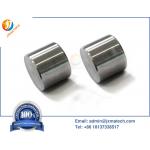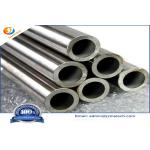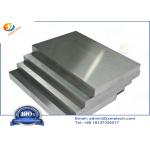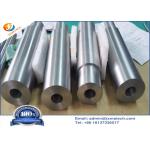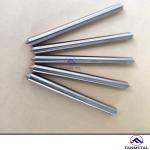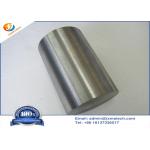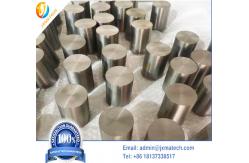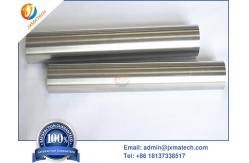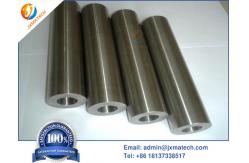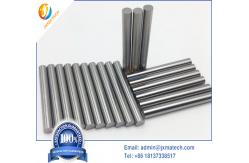Grounded Machined High Density Tungsten Heavy Alloy Column Rod
WNiFe/WNiCu
Tungsten Heavy Alloy Column Rod with high density, high strength,
high hardness alloy (commonly known as 3 h) and good comprehensive
performance, excellent properties such as ductility, conductivity,
thermal conductivity, and plays an important role in the home to
weapons manufacture, has been widely used in the defense industry,
aerospace and civil industry (such as electric industry and
drilling). High specific gravity tungsten alloy material has become
a kind of military and civil alloy material.
SPECIFICATION & CHEMICAL COMPOSITIONS (NOMINALS)
| Chemical Composition | 90%W | 93%W | 95%W | 97%W |
| State | Sinter | Vacuum | Forge | Sinter | Vacuum | Forge | Sinter | Vacuum | Sinter | Vacuum |
Density
(g/cc) | 16.85-17.25 | 17.15-17.85 | 17.75-18.35 | 18.25- 18.85 |
Hardness
(HRC) | 32 Max | 30 Max | 40 Min | 33 Max | 31 Max | 40 Min | 34 Max | 32 Max | 35 Max | 33 Max |
| Tensile Strength (Max) | 770 Min | 900 Min | 1400
Max | 770 Min | 910 Min | 1440 Max | 735 Min | 920 Min | 700 Min | 850 Min |
Yield Strength
(Mpa) | 620 Min | 620 Min | 1280 Max | 650 Min | 650 Min | 1340 Max | 650 Min | 650 Min | - | - |
Elongation
(%) | 5 Min | 15 Min | 5 Min | 5 Min | 12 Min | 3 Min | 3 Min | 12 Min | 2 Min | 6 Min |
Tungsten Heavy Alloy Column Rod Picture:
Introduction and Characteristics of Tungsten Heavy Alloy Column Rod
Tungsten heavy alloys contain 90% to 98% tungsten, which is
responsible for their high density (16.5 to 19.00g/cc). Nickel,
iron and/or copper are used as metal binder substrates to hold
fragile tungsten particles together, making tungsten alloys tough
and easy to work with. Nickel-iron is the most commonly used
additive, with a ratio of 7Ni:3Fe or 8Ni:2Fe (weight ratio).
Common processes for preparing tungsten heavy alloys include mixing
the desired amount of tungsten, iron, nickel or copper powder and
then cold pressing and liquid phase sintering to almost full
density. During the liquid phase treatment, the matrix tungsten
alloy melts and some tungsten is brought into the solution to form
a microstructure through which large tungsten particles (20-60μm)
are dispersed in the matrix alloy.
Application of Tungsten Heavy Alloy Column Rod
In the design and development of shell piercing shells abroad, the
use of high specific gravity tungsten alloy is an effective
technical measure to improve the core kinetic energy and the
ability of piercing shells. Foreign countries attach great
importance to this. It began development in the early 1970s and
became operational within a short time. At present, in addition to
the use of high gravity tungsten alloy core materials in the United
States, many western European countries also use the corresponding.
